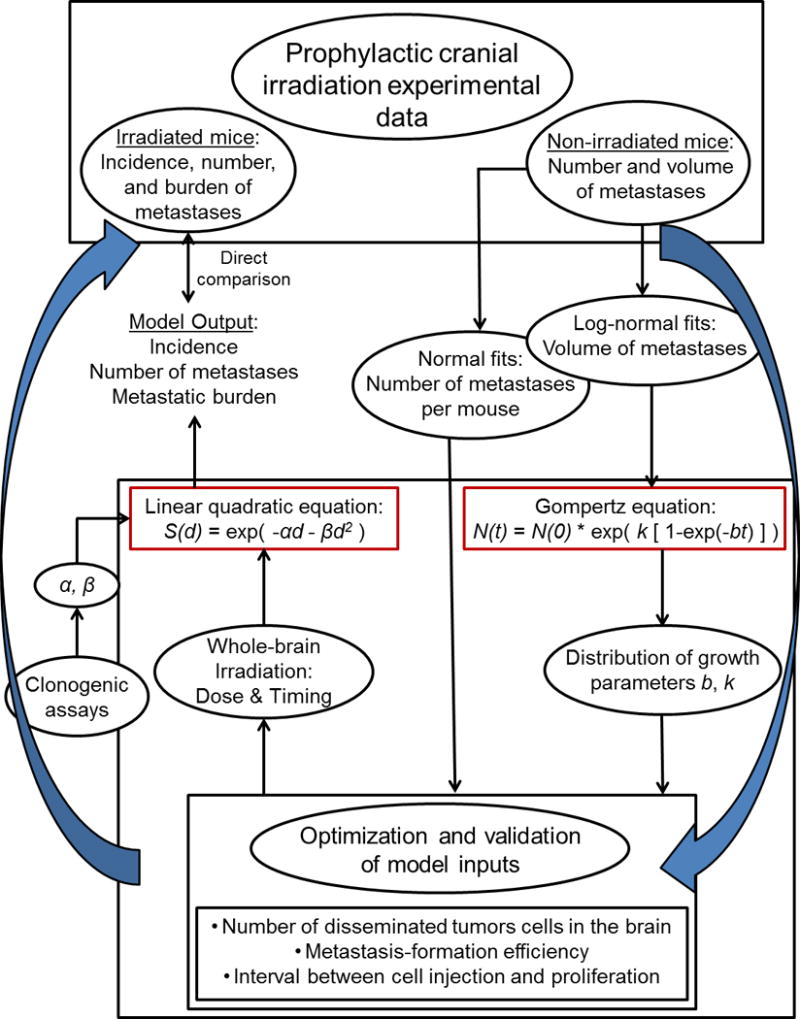Fig. 1. Model conceptualization.

The computational model was developed and optimized with data from the unirradiated control group in a previous experiment of prophylactic cranial irradiation (PCI) in combination with tumor-cell injection. The growth of the metastases was assumed to follow Gompertzian kinetics, and log-normal volume fits were used to generate a distribution of Gompertz parameters b and k. The fits for the number of metastases per mouse were the reference points for the optimization. The linear quadratic formula was used to convert radiation dose into a survival fraction, in which the parameters α and β were determined through clonogenic assays. The model output could then be compared with the irradiated groups in the PCI experiment.
